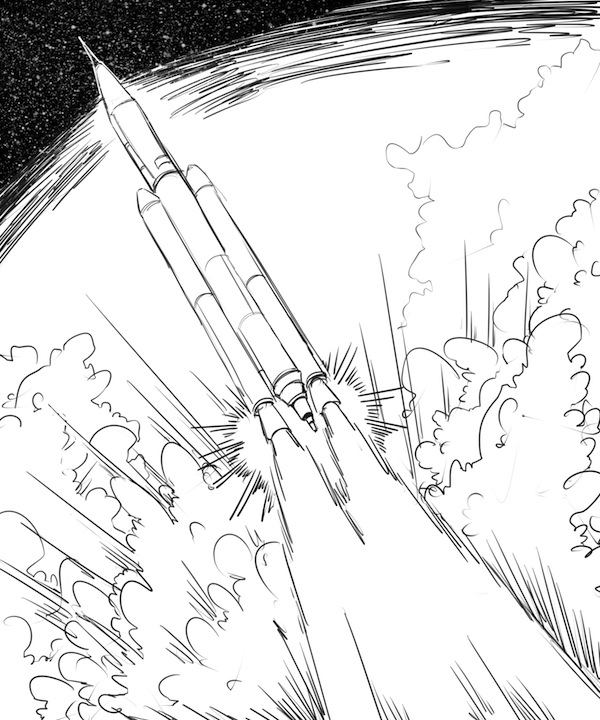The itch to explore has always played a key role in our culture. It has also been an important anchor upon which many works of science fiction are based; many stories feature tales about exploration. Edgar Allan Poe’s The Unparalleled Adventures of One Hans Pfaall featuring a man visiting the moon by means of a balloon is agreed to be one of the first works of science fiction and was published in 1835.
Unlikely modes of transportation aside, we have reached a point in history where most of the globe is quite well known, and only the stars remain to be explored and discovered. So it is not so surprising that space travel has become such a staple of so many science fiction tales. From Star Trek to Futurama, we seem obsessed with exploring space.
The conventional mechanism of propulsion for spacecraft is relatively well known. The product of highly exothermic chemical reactions which expel a great deal of energy is expelled through a nozzle at the base of the rocket. Newton’s Third Law, which states that “Every action has an equal and opposite reaction” takes care of the rest.
This method of propulsion may be simple, but it has a few flaws. First, it is a very inefficient process. Only 35 per cent of the energy expelled from the chemical reactions actually goes towards moving the ship; the rest most likely escapes as heat. Although the reactions do generate a great deal of acceleration—the rate at which their speed increases—their top speed is limited to about 8000 meters per second.
8000 meters per second might sound fast, but the speed of light is 300,000,000 meters per second—quite a big difference. Alpha Centauri, the closest star to our own solar system is 4.3 light years—the time it takes for the light to travel to us—away. This means that there’s roughly 40,000,000,000 kilometres in between us and the closest star.
One reasonable alternative to internal combustion engines is the use of ion drives. Espoused by science fiction writers, these propulsion systems have recently emerged into widespread use, as they tackle a few of the problems raised by chemical propulsion.
The ion drive was first described in 1947 in the short story called The Equalizer, written by Jack Williamson. Later, George Lucas uses ion drives in the Twin Ion Engines—small, manuverable spacecrafts—featured in Star Wars. Both writers emphasize the faster and more efficient means of space travel that this alternate method provides.
An ion is simply a particle. It can be an atom or a molecule, and is either positively or negatively charged. Ions are interesting because they can be manipulated using currents. The concept is not so different from moving a magnet around using another magnet. In the case of ion propulsion, electric current is used to push charged particles out of the nozzle rather than chemical products.
The advantage of this system is not so evident, but it relies on the fact that the ions are being pushed out of the rocket by an electric current. Ion engines use plasma, which is a neutral gas consisting of equal amounts of positive and negative charges. Plasma is considered its own state of matter because of its fairly unique properties. Prime among them is the fact that it is a good conductor of electricity.
Using electric current as a method of propulsion is better than simply using a chemical reaction because the heat of the reaction limits the latter. The voltage applied to ion thrusters is the limiting factor in their top speed, and voltage is theoretically unlimited.
Furthermore, rockets have top speeds of 90,000 meters per second—a great deal faster than chemical thrusters (rockets with a single propellant force). The downside is that their acceleration is not high enough to exit the earth’s atmosphere. While rockets require a great deal less fuel, they must be used in conjunction with other methods to escape the earth’s pull.
Although both these technologies are great strides in the effort to explore beyond our solar system, the incredible distances between us and other cosmic bodies are limiting. If we truly want to navigate interstellar distances, we would need newer and better modes of transportation.
One group of researchers called Icarus Interstellar have spearheaded such attempts with various projects involving numerous contributions from researchers around the world. The company, along with others such as SpaceX, seeks to maybe one day make our wildest dreams come true.







